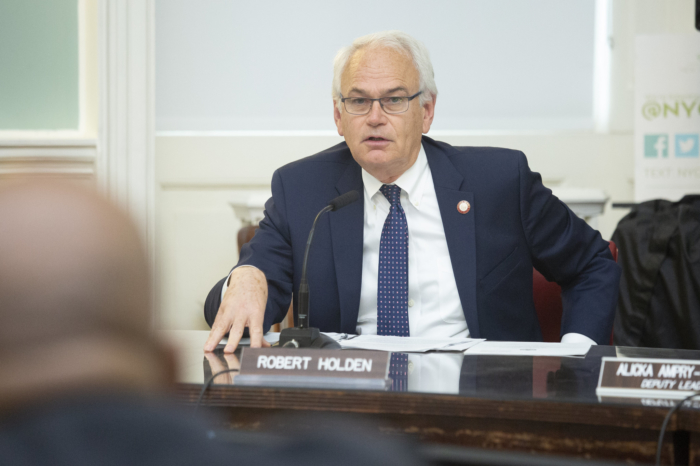Seven months after Hurricane Sandy slammed into New York City and delivered the most crippling blow in the MTA’s history to the subway system, the A train resumed service between Howard Beach and the Rockaways last week.
Even before the superstorm destroyed 1,500 feet of track across Jamaica Bay, Rockaway straphangers endured one of the longest commutes by public transit in the nation. What had been an hour and half ride on the A train from Far Rockaway to Manhattan turned into a nightmare journey of at least 2 1/2 hours with 30,000 riders juggling transfers between an interim shuttle train and buses before boarding the truncated subway at Howard Beach.
“In the context of government, this is the speed of light,” interim MTA Chairman Fernando Ferrer told a crowd of MTA workers, community leaders and would-be subway riders gathered at the Rockaway Beach station for the return of A line service May 30.
Ferrer and other MTA officials rode a vintage A line subway car first put into service in the 1930s to mark the relinking of the Rockaways with the rest of Queens.
The MTA scrambled to get the line running again in time for the summer season, when tourism dollars buoy the economy in the Rockaways and contribute to the financial well-being of the borough. As the Rockaways struggle to rebuild from Sandy, residents are getting another boost on the transportation front.
More work remains to be done, however, to protect the vulnerable tracks from another storm surge.
The city announced it would extend ferry service, put in as an emergency alternative to the A train after the superstorm, for at least six weeks and perhaps through Labor Day if ridership is strong enough. Additional ferries also will run on weekends between the Rockaways and Lower Manhattan beginning July 4.
Could it be the Rockaways, long the transit stepchild of the borough, could finally be getting the attention they deserve?
Residents still must pay a toll on the Cross Bay Bridge to Howard Beach, even though they share the same community and school boards, but there is talk of reviving the abandoned Rockaway LIRR line as a second rail link to the peninsula.
It has taken the devastation of Sandy to awaken city officials to the needs of the people of the Rockaways, who cherish their independence but want to have reliable lifelines to the rest of the borough and city.





























